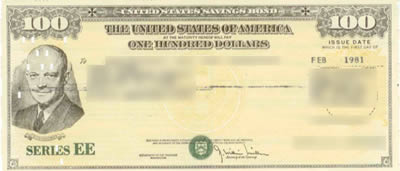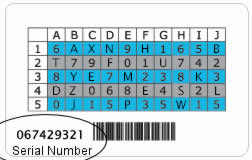 New inflation numbers for March 2011 were announced on April 15th, so it’s time for the usual semi-annual update and rate predictions. This time around presents a good buying opportunity for a low-risk investment with interest rates higher than current bank CDs.
New inflation numbers for March 2011 were announced on April 15th, so it’s time for the usual semi-annual update and rate predictions. This time around presents a good buying opportunity for a low-risk investment with interest rates higher than current bank CDs.
New Inflation Rate
September 2010 CPI-U was 218.439. March 2011 CPI-U was 223.467, for a semi-annual increase of 2.30%. Using the official formula, the variable interest rate for the next 6 months will be approximately 4.60%, depending on the upcoming fixed rate announcement.
Purchase and Redemption Timing Tips
You can’t redeem until 12 months have gone by, and any redemptions within 5 years incur a interest penalty of the last 3 month of interest. A known “trick” with I-Bonds is that if you buy at the end of the month, you’ll still get all the interest for the entire month as if you bought it in the beginning of the month. It’s best to give yourself a little buffer time though, since if you wait too long your effective purchase date may be bumped into the next month.
Buying in April
If you buy before the end of April, the fixed rate portion of I-Bonds will be 0.0%. You will be guaranteed an variable interest rate of 0.74% for the next 6 months, for a total rate of 0 + 0.74 = 0.74%. For the 6 months after that, the total rate will be 0.0 + 4.60 = 4.60%. Let’s say we hold for the minimum of one year and pay the 3-month interest penalty. If you buy on April 30th and sell on April 1, 2012, you’ll earn a 1.66% annualized return for an 11-month holding period, for which the interest is also exempt from state income taxes. This is better than any 1-year bank CD that I can find right now, keeping in mind the liquidity concerns and the purchase limits.
Given that you lose the last 3 months of interest (again, for holding less than 5 years), it might be better to wait long enough to grab that 4.60% for the entire 6-month period. If you buy on April 30th and hold until July 1st, 2012, you’d achieve a annualized return of ~2.29% over 14 months.
Buying in May
If you wait until May, you will get a new unknown fixed rate plus 4.60% for the first 6 months. My guess for the fixed rate would be 0.0% again, given current real yields for TIPS. The next 6 months will be based on an unknown rate based on future inflation. Worst case scenario, there will be zero inflation and you get paid nothing. Even in that case, if you buy on May 31st, 2011 and sell on May 1st, 2012, you would end up with an annualized return of 2.51% over 11 months.
If you are looking simply for the highest interest rate for a short period, then it would likely be better to wait until May 31st to buy up your savings bonds this year. If CPI inflation is very low or negative for the next 6 months and you are holding for at least 14 months, then it may end up being slightly better to buy in April. In the end, there’s more potential upside for buying in May, so that’s what I plan to do.
Low Purchase Limits
The annual purchase limit is now $5,000 in paper I-bonds and $5,000 in online I-bonds per Social Security Number. For a couple, that’s $20,000 per year. Buy online at TreasuryDirect.gov. As for paper, here is a post on how to buy paper savings bonds from your local bank. Some larger banks may have an electronic process.
For more background, see the rest of my posts on savings bonds. I’m keeping all of mine for the foreseeable future, due to their tax deferral possibilities and other unique advantages.



 The Best Credit Card Bonus Offers – 2025
The Best Credit Card Bonus Offers – 2025 Big List of Free Stocks from Brokerage Apps
Big List of Free Stocks from Brokerage Apps Best Interest Rates on Cash - 2025
Best Interest Rates on Cash - 2025 Free Credit Scores x 3 + Free Credit Monitoring
Free Credit Scores x 3 + Free Credit Monitoring Best No Fee 0% APR Balance Transfer Offers
Best No Fee 0% APR Balance Transfer Offers Little-Known Cellular Data Plans That Can Save Big Money
Little-Known Cellular Data Plans That Can Save Big Money How To Haggle Your Cable or Direct TV Bill
How To Haggle Your Cable or Direct TV Bill Big List of Free Consumer Data Reports (Credit, Rent, Work)
Big List of Free Consumer Data Reports (Credit, Rent, Work)